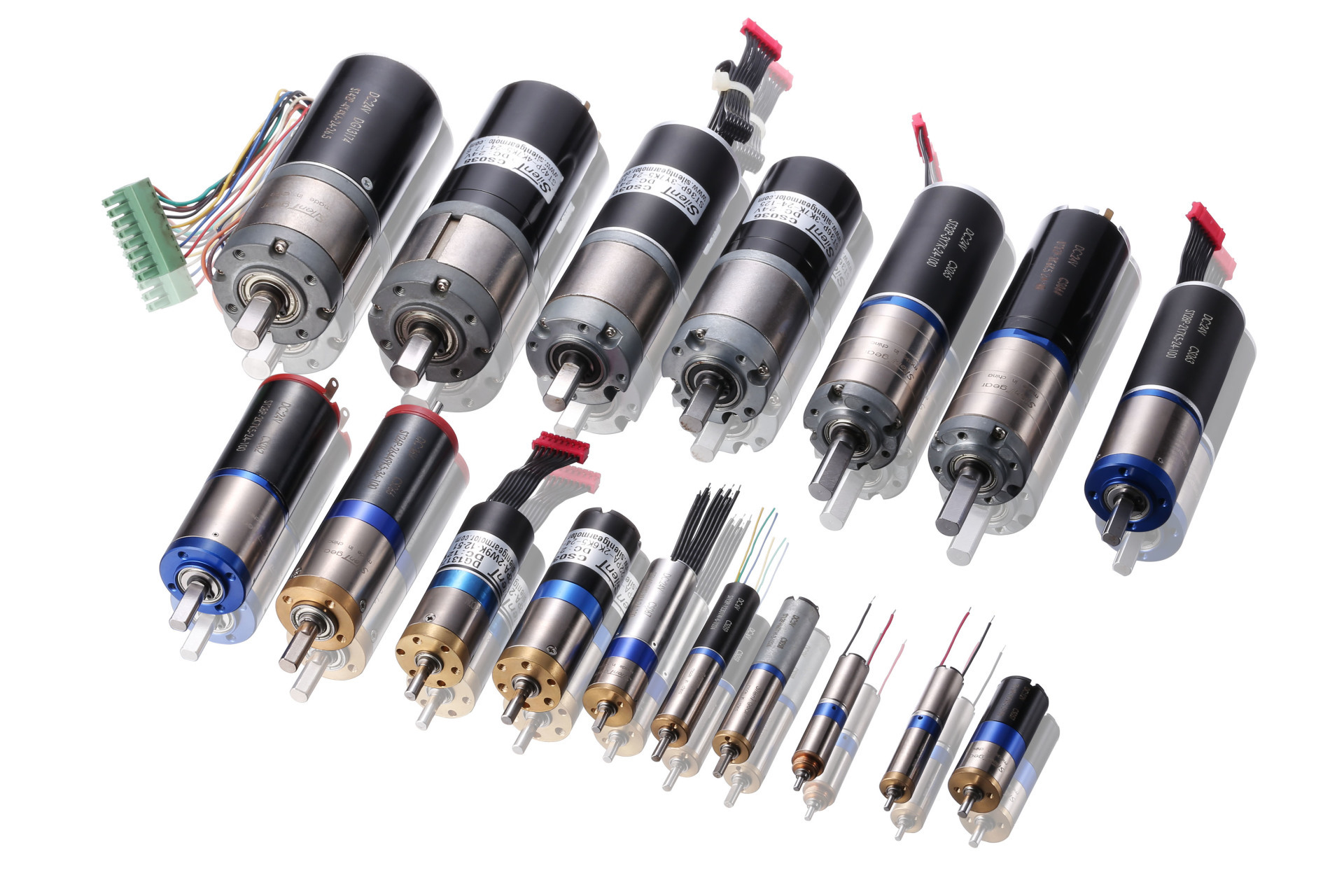Definition and Classification of Micro DC Gear Motors
Definition and Classification of Micro DC Gear Motors
Release time:
2024-04-28 09:38
Definition and Classification of Micro DC Gear Motors
A micro DC gear motor is a small DC motor with an additional reduction device used to slow down the rotation speed of the output shaft and increase torque. This design makes micro DC gear motors suitable for applications that require precise control and relatively low power output. Below is a detailed description of the definition and classification of micro DC gear motors:
Definition:
Micro DC gear motor: A micro DC gear motor is a type of DC motor, typically designed to be compact and lightweight, with a built-in reduction device to adjust the rotation speed of the output shaft and increase output torque. These motors are often used in fields that require high precision control and limited space, such as precision instruments, automation equipment, and electronic products.
Classification:
Gear Reduction Motor: This is the most common type of micro DC gear motor. They contain a gear transmission system that slows down the rotation speed of the output shaft through a gear mechanism. Common types of gear reduction motors include planetary gear reduction motors and worm gear reduction motors.
Brushless DC Gear Motor: Compared to traditional brushed DC motors, brushless DC gear motors use brushless technology, providing higher efficiency and lifespan. They are suitable for applications that require long operating times and low noise.
Stepper Gear Motor: A stepper gear motor is a motor that achieves rotation through stepwise motion. They provide discrete angular steps and are commonly used in applications that require high precision positioning, such as printers and CNC machine tools.
Linear Gear Motor: Unlike traditional rotational motion, linear gear motors produce linear motion. This is very useful for certain specific linear motion applications, such as sliding doors and automatic curtains.
Multi-axis Gear Motor: Some micro gear motors have multiple output shafts, allowing them to perform multiple tasks simultaneously. This is very important for applications that require complex motion control.
Position Control Motor: This type of motor is usually equipped with position sensors, such as encoders, to achieve high precision positioning control. They are commonly used in applications that require accurate positioning and position feedback.
DC Brushed Gear Motor: This is the most basic type, using a brushed DC motor combined with a reduction mechanism. Although they may not last as long as brushless DC motors in some applications, they are still widely used.
These classifications depend on the requirements of the application, such as output power, speed, precision, and space limitations. Choosing the appropriate type of micro DC gear motor is crucial for the performance of specific Applications.
Related News
What is the difference between brushless reduction motors and brushed reduction motors?
Brushless DC Motor (BLDC) and Brushed DC Motor have some significant differences in structure, working principle, performance, and other aspects. Here are their main differences:
How to assess the noise level and vibration characteristics of a screw-type window opener motor?
When selecting a screw-type window opener motor, its noise level and vibration characteristics are two crucial factors that directly affect the user experience and the stability of the equipment. So, how should we evaluate these two aspects?
In the field of construction, screw-type window openers are important devices for achieving automated window opening and closing, and their performance and stability are crucial. Especially in some harsh environmental conditions, such as high humidity and dusty places, the protection level of the motor becomes a key factor in ensuring the normal operation of the window opener.
What are the common faults of screw-type window opener motors?
The screw-type window opener motor may experience some common faults during long-term use. Below are some typical fault phenomena and their possible causes.
Introduction to Micro DC Gear Motors
Introduction to Micro DC Gear Motors Micro DC gear motors are a miniaturized motor system, typically consisting of a DC motor and a gearbox. Here are some related introductions to micro DC gear motors: DC Motor Section: Working Principle: The DC motor generates current by moving a conductive coil in a magnetic field, thus producing electromagnetic force to drive the motor's rotation. Structure: Micro DC motors usually adopt a separate structure, including an armature (rotating part) and an electromagnet (stator part). Types: Common types of DC motors include brushed DC motors and brushless DC motors. Brushed DC motors use brushes to connect to the armature, while brushless DC motors control current through an electronic speed controller, eliminating the need for brushes. Gearbox Section: Function: The gearbox is used to slow down the motor's output speed while increasing torque. This is crucial for applications requiring higher torque and lower speeds, such as robotic arms and camera gimbals. Structure: Gearboxes typically consist of gears that achieve the reduction ratio through different gear combinations. The reduction ratio is the ratio of input speed to output speed. Types: Common types of gearboxes include planetary gears, worm gears, and helical gears. Different types of gearboxes are suitable for different application scenarios. Applications: Micro DC gear motors are widely used in various fields, including consumer electronics (such as cameras and printers), medical devices, robotics, and automotive electronics. In these applications, micro DC gear motors are typically used to control precise movements, provide sufficient torque, and achieve efficient performance in limited spaces. Control and Drive: Micro DC gear motors usually require corresponding electronic speed controllers or controllers to precisely control rotation speed and direction. The control system can adjust the motor's output according to application needs, achieving precise position control and speed regulation. Performance Parameters: The performance parameters of micro DC gear motors include rated voltage, rated speed, rated torque, efficiency, etc. These parameters are crucial for selecting and designing motor systems. In summary, micro DC gear motors have been widely applied under the trends of miniaturization, precision, and efficiency, providing reliable driving force for many electric devices and systems.

